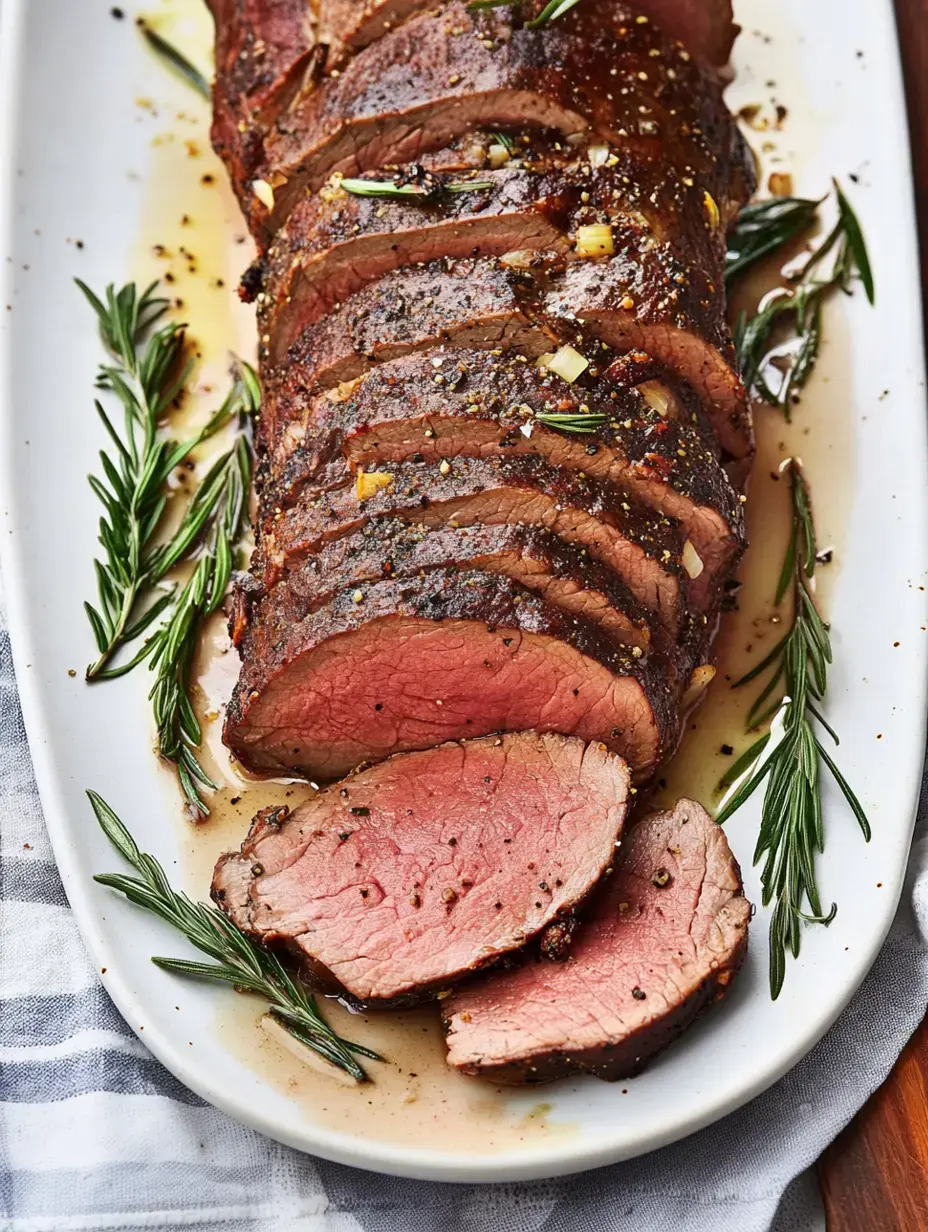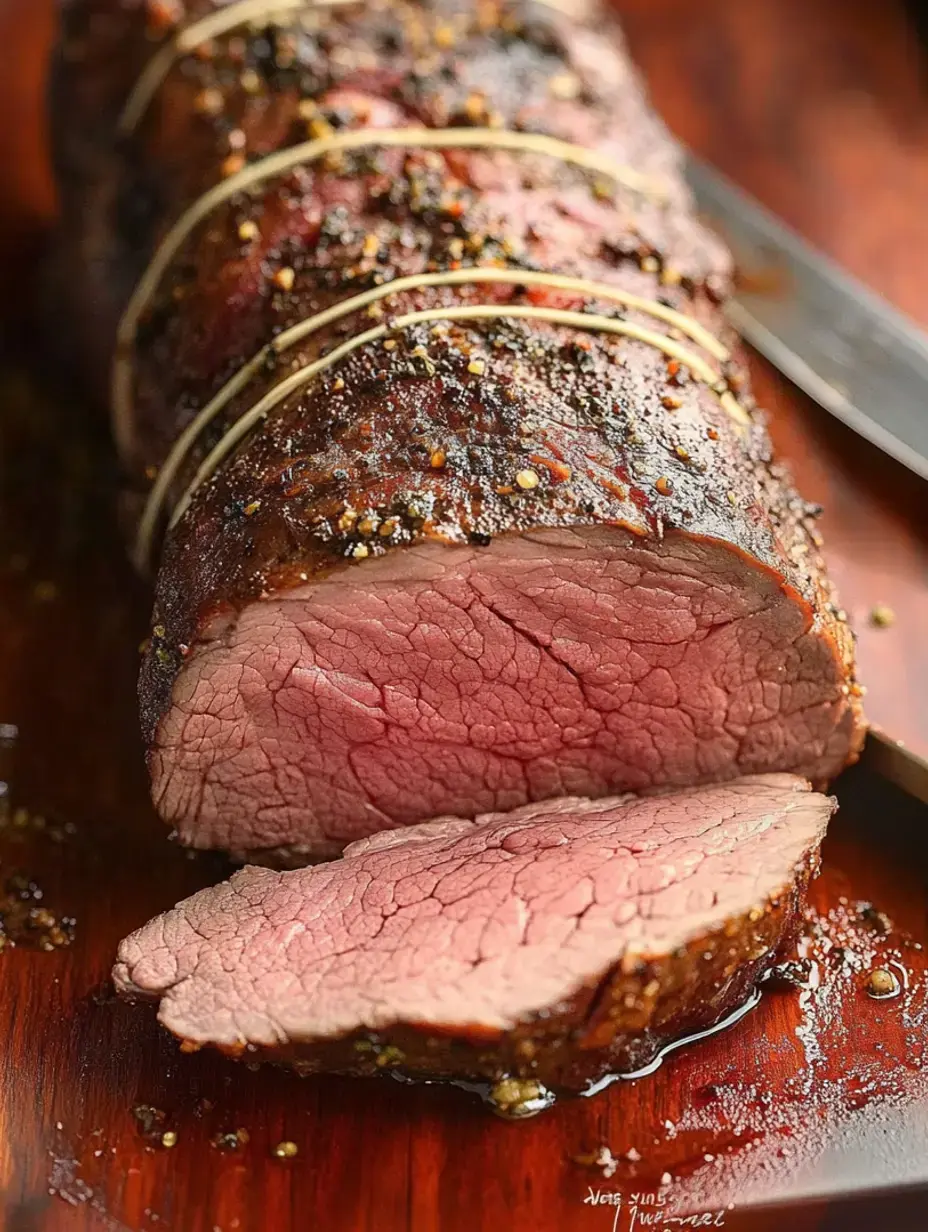 Pin it
Pin it
I've gotta tell you about my go-to method for cooking the champion of beef options. Whenever I make beef tenderloin, I'm blown away by how such basic preparation turns into something extraordinary. The real trick is stepping back and letting this gorgeous cut do the talking with just a touch of spices and watching the temperature like a hawk.
Premium Excellence
For those big moments in life, beef tenderloin stands in a class by itself. I've cooked this at tons of family gatherings and fancy dinners, and it always gets people talking. The melt-in-your-mouth feel and deep taste make every single bite feel like you're at a party.
Finding Your Meat
I've found it pays to get friendly with the meat guy at my store who always steers me right. Watch for nice fat running through it and get them to clean it up for you. A properly trimmed tenderloin costs more but you'll thank yourself later.
Prep Work
My first job is to wrap the meat with string about every inch. It might look fussy but this really helps it cook the same all over and keeps that nice round shape we want. I love how fancy it looks all strung up.
 Pin it
Pin it
Basic Flavors
Through trial and error, I've found that keeping it simple works best with tenderloin. Some crushed fresh garlic, good sea salt and cracked black pepper is all you need. Let that amazing beef flavor take center stage.
Prep For Success
I always put foil in my pan cause it makes washing up so much easier. You can't skip using a rack - it helps hot air move all around the meat so it cooks perfectly on all sides.
Watch The Clock
That first burst of hot oven makes a yummy crust, then turning it down lets it finish cooking gently. My temperature probe is so important here - no guessing games, just perfect cooking every time.
Worth The Wait
Those 15 minutes of sitting there might drive you crazy but don't skip them. I cover the meat loosely with foil and use that time to finish my side dishes and call everyone to dinner. The wait actually makes it taste better.
Butter Magic
My secret move is putting butter slices on top while the meat sits. The butter slowly melts down creating amazing little flavor spots that make each bite even more fancy.
 Pin it
Pin it
Elegant Carving
The big moment comes when I make that first cut. I grab my best knife and slice against the grain in thick pieces. When the meat gives way easily to the knife, I know I've nailed it.
Tasty Sidekicks
Nothing makes me smile more than putting this next to crispy roasted spuds and bright veggies. A spoonful of freshly made horseradish sauce nearby takes everything up a notch. These flavors were made for each other.
Drink Pairings
Breaking out a good bottle of red wine makes dinner feel extra fancy. I love how a nice Cab brings out all the beefy goodness. It's these little touches that turn regular dinner into something to remember.
Taste Adventures
I sometimes play around with different seasonings. A coating of smashed peppercorns tastes amazing, and fresh herbs from outside add such a nice smell. You can try so many different things.
Take Your Time
That resting period isn't optional in my house. I've learned the hard way that rushing means all those tasty juices run out. Being patient really pays off with tenderloin.
 Pin it
Pin it
Eye-Catching Display
I try to make it look as tasty as it is. A few sprigs of herbs scattered on the plate, some roasted veggies arranged nicely. We start eating with our eyes, after all.
Tomorrow's Meal
If we're lucky enough to have some left, I wrap up each slice carefully. They make killer sandwiches the next day. But honestly, leftovers hardly ever happen because everyone wants more.
Temperature Tricks
My food thermometer is the most important tool for this dish. Different sized cuts need different cooking times but that perfect inner temperature never lies.
Showtime Serving
When I really want to wow people, I'll light up some cognac for a quick sauce right at the table. The way everyone's eyes pop when the flames shoot up makes it totally worth it.
Extra Touches
Sometimes I'll soak the tenderloin overnight with herbs and garlic. You don't have to do this but it adds another level of taste that makes an already fancy dish even more unforgettable.
 Pin it
Pin it
Frequently Asked Questions
- → When's the beef tenderloin ready to eat?
Grab a meat thermometer to check inside. For medium-rare, look for 130°-135°F. Medium is good at 135°-140°F, and rare falls around 120°-125°F. Keep in mind the temp goes up by about 5 degrees while resting.
- → How do I keep leftovers fresh and warm them back up?
Put leftovers in a sealed container in the fridge for up to 3 days. Warm them in a 350°F oven, wrapped in foil, for 10-15 minutes. Don't let them get too hot, or they might dry out.
- → What’s the reason for removing silverskin?
Silverskin is a tough bit of connective tissue that won't cook down, leaving your beef chewy. Taking it off makes the meat tender and easier to eat.
- → Why do I need to tie the meat?
Tying keeps the beef even in size, helping it cook evenly all the way through. It also holds the thinner edges in place for better looks and better results when cooking.
- → Can I get the tenderloin ready earlier?
Feel free to clean and tie it ahead of time. But don’t season until you’re ready to cook—it keeps the salt from pulling out any moisture from the beef.
Conclusion
Step-by-step details to prep the best beef roast from cleaning and tying to cooking techniques. Master the ideal temperatures for enjoying a restaurant-standard beef dinner at home.
